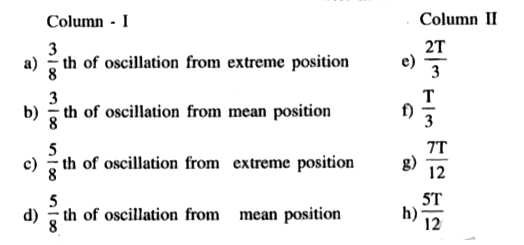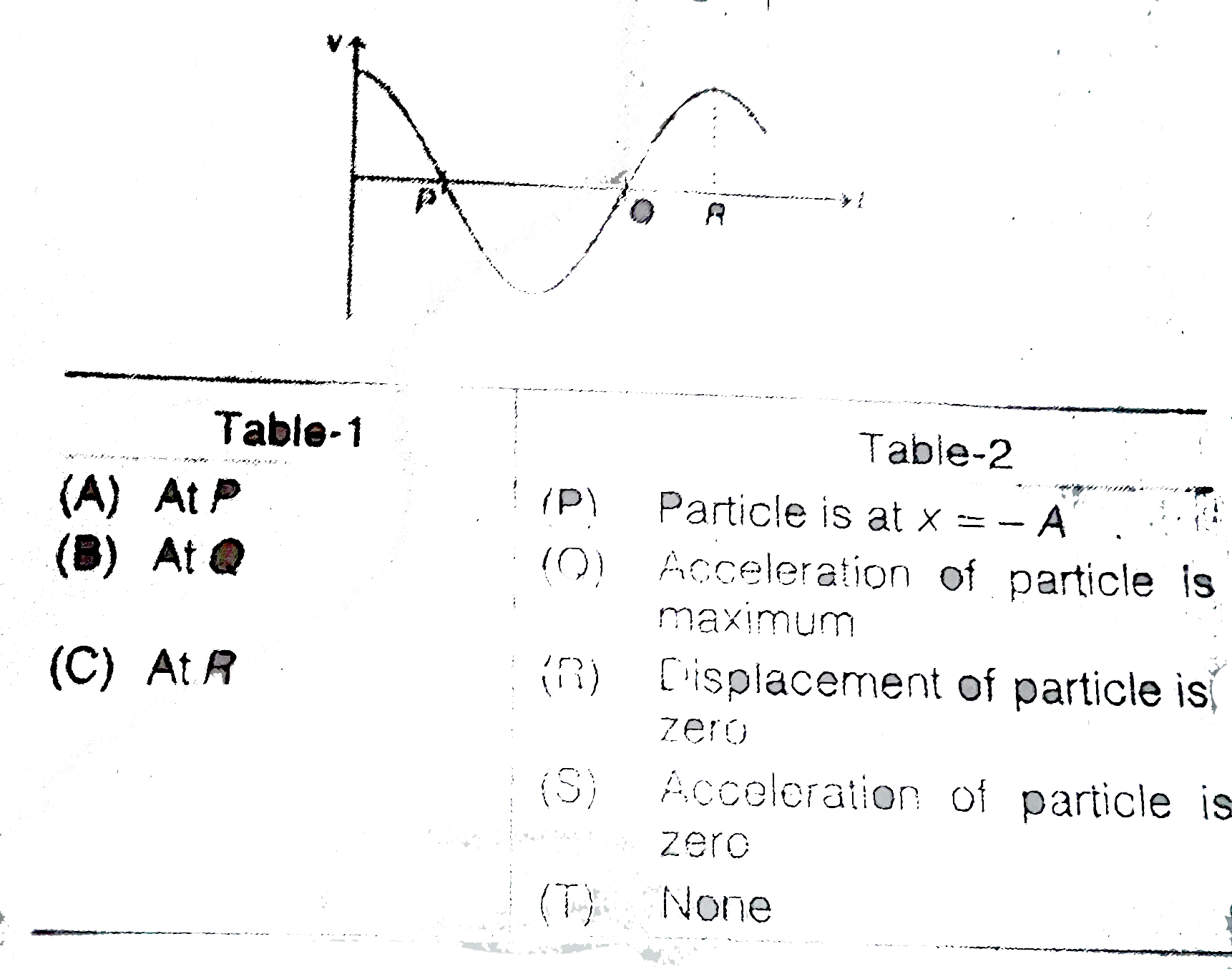The time period of oscillation of the particle in SHM is 'T' Then match the following

a-e, b-g, c-h, d-f
a-h, b-h, c-e, d-g
a-f, b-e, c-h, d-g
a-e, b-f, c-g, d-h
The correct Answer is:B
Topper's Solved these Questions
- OSCILLATIONSBOOK - AAKASH SERIESCHAPTER - OSCILLATIONSEXERCISE - EXERCISE -I ASSERTION & REASON TYPE QUESTIONS
19 Videos
- OSCILLATIONSBOOK - AAKASH SERIESCHAPTER - OSCILLATIONSEXERCISE - EXERCISE -II Equations of SHM
38 Videos
- OSCILLATIONSBOOK - AAKASH SERIESCHAPTER - OSCILLATIONSEXERCISE - EXERCISE -I MORE THAN ONE ANSWERS QUESTIONS
6 Videos
- OSCILLATIONBOOK - AAKASH SERIESCHAPTER - OSCILLATIONEXERCISE - QUESTIONS FOR DESCRIPTIVE ANSWERS
12 Videos
- PHYSICAL WORLDBOOK - AAKASH SERIESCHAPTER - PHYSICAL WORLDEXERCISE - VERY SHORT ANSWER TYPE QUESTIONS
5 Videos
Similar Questions
Knowledge Check
The time period of oscillation of a particle in S.H.M. depends
Anot upon its mass,Bupon its mass,Cupon amplitude of the S.H.M.Dupon phase of the particle.The time period of an oscillating body executing SHM is 0.05 sec and its amplitude is 40 cm. The maximum velocity of particle is :
A16πms−1B2πms−1C3.1ms−1D4πms/sIf x,v and a denote the displacement, the velocity and the acceleration of a particle executing simple harmonic motion of time period T, then, which of the following does not change with time ?
AaTxBaT+2πvCaTvDa2T2+4π2v2
Assertion : A particle performing SHM at certain instant is having velocity v. It again acquire a velocity v for the first time after a time interval of T second. Then the time period of oscillation is T second.
Reason : A particle performing SHM can have same velocity at two instants in one cycle.
View SolutionIn terms of time period of oscillations T, find the shortest time in moving a particle from +A2 to −√32.
View SolutionIn terms of time period of oscillations T, find the shortest time in moving a particle from +A2 to −√32.
View SolutionThe time period of a particle executing SHM is T. After a time T/6 after it passes its mean position, then att=0 its :
View SolutionAssertion : A particle performing SHM at certain instant is having velocity v. It again acquire a velocity v for the first time after a time interval of T second. Then the time period of oscillation is T second.
Reason : A particle performing SHM can have same velocity at two instants in one cycle.
View Solution

